Showing 25–48 of 71 results
-
Sold out!
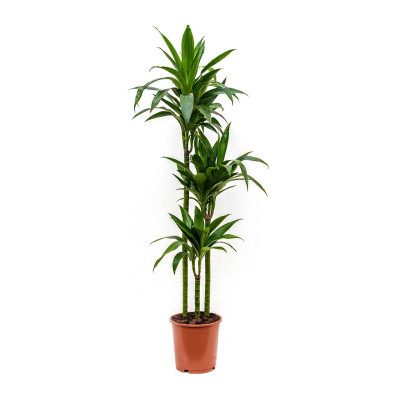
AED 40.00 + VAT
Dracaena Janet Craig has lush, shiny, wide green leaves with wavy edges. A tall growing, upright, compact species, Janet Craig looks great as an elegant floor specimen and is well known for its ability to purify the surrounding air. It does well in a shady spot making it perfect for urban and office environments.
-
Sold out!
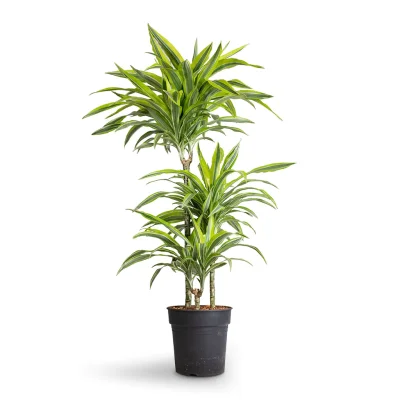

AED 40.00 + VAT
As its name suggests, Dracaena Lemon Lime is a vibrant, fresh Dracaena with bright green, yellow and white leaves. It is wide spreading, with delightfully long, arching, lance-shaped leaves arranged around a central stem. Leaves are predominantly a lemon-lime background colour, sometimes tending towards yellow, with a central stripe of darker green edged in white.
The multi-stem version is a unique look that gives height and tiered levels of foliage. Its zesty freshness brightens up home or office interiors, whilst filtering toxins from the atmosphere so you breathe easier.
-
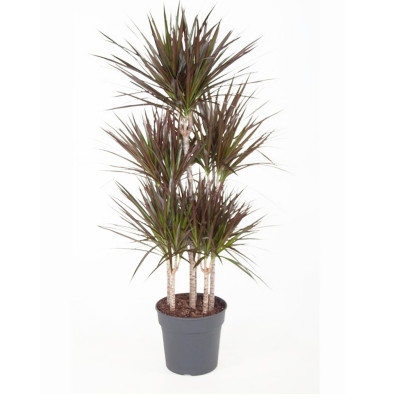
AED 25.00 + VAT
Dracaena Marginata thrives in moderate to bright indirect light, making it suitable for various indoor environments. Its low-maintenance nature and resilience make it an ideal choice for both experienced plant enthusiasts and beginners. With its air-purifying qualities, it helps to improve the quality of your indoor air, creating a healthier and more enjoyable living space.
-

AED 250.00 + VAT
Dracaena fragrans, is a flowering plant species that is native throughout tropical Africa.It is also known as striped dracaena, compact dracaena, and corn plant.
-


AED 25.00 + VAT
Epipremnum aureum has large, glossy green leaves with irregular cream and yellow streaks and blotches that are valued for their air-purifying qualities. Golden Pothos also tolerates lower light levels without losing its variegation and looks best displayed as a hanging plant.
Other common names include Devils Ivy, Ivy Arum and Ceylon Creeper. Latin synonyms are Epipremnum pinnatum Aureum (mainly US and Canada), Scindapsus aureus (Europe) or Phaphidophora aureu (previous botanical name).
-

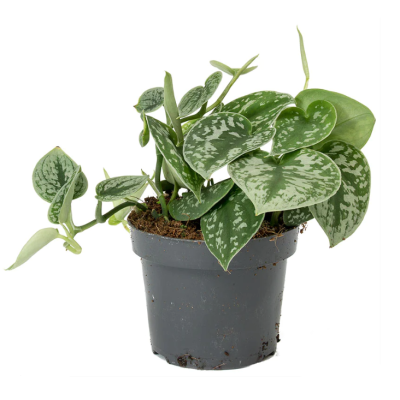
AED 45.00 + VAT
Satin Pothos has large, heart shaped matte green leaves with silvery-white splotches and edges. It is more compact than its cousin and makes a beautiful hanging plant, with an elegant, satin sheen.Other common names include Silver Vine, Silver Cloud, Silk Pothos and Silver Philodendron. In Latin, it also goes by the name Scindapsus pictus Argyraeus (particularly in Europe). Pictus means ‘painted’ and is a reference to its lovely silvery variegation.
-
Sold out!
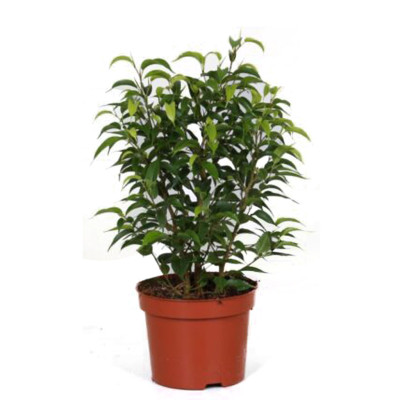
AED 40.00 + VAT
Ficus benjamina, commonly known as weeping fig, benjamin fig or ficus tree, and often sold in stores as just ficus, is a species of flowering plant in the family Moraceae, native to Asia and Australia. It is the official tree of Bangkok. The species is also naturalized in the West Indies and in the states of Florida and Arizona in the United States. In its native range, its small fruit are favored by some birds.
-
Sold out!

AED 60.00 + VAT
”Ficus cyathistipula”, the African fig tree, is a species of fig that is native to the tropical forest regions of Africa. They may be small trees, shrubs or hemi-epiphytic lianas, and are widespread in the moist tropics, where they may be found in Afromontane or rainforest, often overhanging pools. The figs are reddish when ripe, and have thick, spongy walls that enable them to float on water. They are named for their cup-shaped (cyathus-) and persistent stipules (stipula).
-
Sold out!
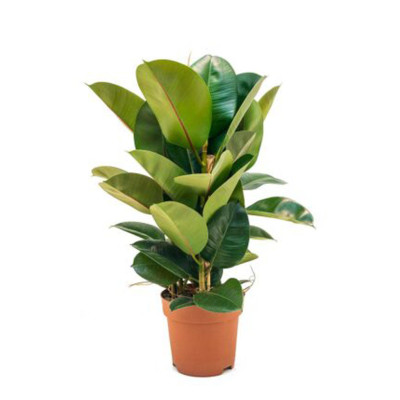
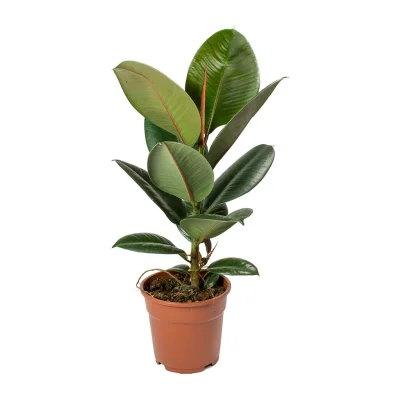
AED 55.00 + VAT
Owning a Rubber Plant is all about the retro-chic of broad, shiny leaves. Ficus elastica Robusta is a modern variety that is very close to the original species in appearance, but with leaves that are wider and more glossy.
Being one of the best air-filtering plants available, and low-maintenance too, Robusta is a great plant to add lush, tropical foliage to your interior spaces.
-
Sold out!


AED 8.00 + VAT
Ficus lyrata, commonly known as the fiddle-leaf fig, is a species of flowering plant in the mulberry and fig family Moraceae. It is native to western Africa, from Cameroon west to Sierra Leone, where it grows in lowland tropical rainforest.
-

AED 20.00 + VAT
Fittonia (nerve plant) is a genus of flowering plants in the acanthus family Acanthaceae, native to tropical rainforest in South America, mainly Peru. The most commonly grown are F. albivenis and its cultivars. They are spreading evergreen perennials growing 10–15 cm (4–6 in) tall. They bear lush green leaves with accented veins of white to deep pink and have a short fuzz covering their stems. Small buds may appear after a time where the stem splits into leaves. They can also be propagated by allowing the trimmings of the tip to grow roots in about 1-2 weeks. Flowers are small with a white to off-white colour. Plants are best kept in a moist area with mild sunlight and temperatures above 55 °F (13 °C), therefore in temperate areas they must be grown as houseplants.
-
Sold out!
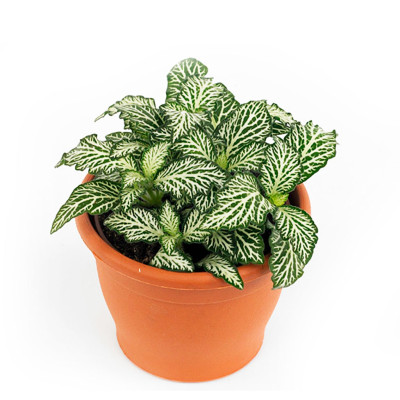
AED 25.00 + VAT
Fittonia (nerve plant) is a genus of flowering plants in the acanthus family Acanthaceae, native to tropical rainforest in South America, mainly Peru. The most commonly grown are F. albivenis and its cultivars. They are spreading evergreen perennials growing 10–15 cm (4–6 in) tall. They bear lush green leaves with accented veins of white to deep pink and have a short fuzz covering their stems. Small buds may appear after a time where the stem splits into leaves. They can also be propagated by allowing the trimmings of the tip to grow roots in about 1-2 weeks. Flowers are small with a white to off-white colour. Plants are best kept in a moist area with mild sunlight and temperatures above 55 °F (13 °C), therefore in temperate areas they must be grown as houseplants.
-
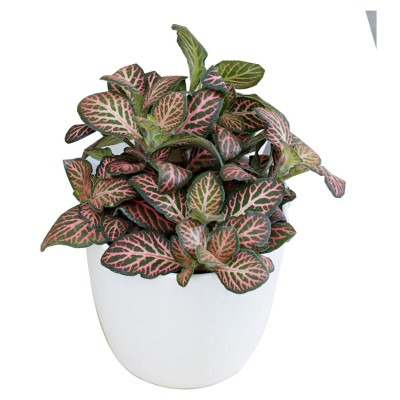
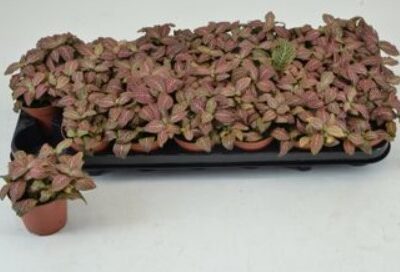
AED 20.00 + VAT
Fittonia albivenis is a species of flowering plant in the family Acanthaceae, native to the rainforests of Colombia, Peru, Bolivia, Ecuador and northern Brazil. An evergreen perennial, it is notable for its dark green foliage with strongly contrasting white or red veins. It is commonly called nerve plant or mosaic plant. In temperate regions where the temperature falls below 10 °C (50 °F) it must be grown as a houseplant.
-
Sold out!
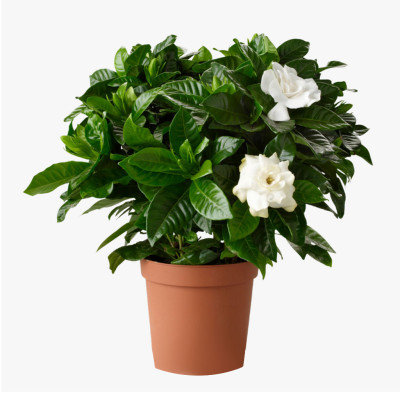
AED 35.00 + VAT
Gardenia jasminoides, commonly known as gardenia and cape jasmine, is an evergreen flowering plant in the coffee family Rubiaceae. It is native to parts of South-East Asia. Wild plants range from 30 centimetres to 3 metres (about 1 to 10 feet) in height. They have a rounded habit with very dense branches with opposite leaves that are lanceolate-oblong, leathery or gathered in groups on the same node and by a dark green, shiny and slightly waxy surface and prominent veins.
-
Sold out!

AED 75.00 + VAT
Guzmania (tufted airplant) is a genus of over 120 species of flowering plants in the botanical family Bromeliaceae, subfamily Tillandsioideae. They are mainly stemless, evergreen, epiphytic perennials native to Florida, the West Indies, southern Mexico, Central America, and northern and western South America. They are found at altitudes of up to 3,500 m (11,483 ft) in the Andean rainforests.
-
Sold out!

AED 25.00 + VAT
Haworthiopsis fasciata, formerly Haworthia fasciata, is a species of succulent plant from the Eastern Cape Province, South Africa. The species is rare in cultivation; most plants that are labelled as H. fasciata are actually Haworthiopsis attenuata.
-
Sold out!

AED 25.00 + VAT
Haworthia cymbiformis is a species of the genus Haworthia in the family Asphodelaceae, endemic to the Eastern Cape Province in South Africa.
-
Sold out!

AED 25.00 + VAT
Haworthiopsis limifolia, formerly Haworthia limifolia, is a species of flowering plant in the genus Haworthiopsis, native to southern Africa and first described in 1910.
-
Sold out!

AED 75.00 + VAT
Hedera helix, the common ivy, English ivy, European ivy, or just ivy, is a species of flowering plant of the ivy genus in the family Araliaceae, native to most of Europe and western Asia. A rampant, clinging evergreen vine, it is a familiar sight in gardens, waste spaces, and wild areas, where it grows on walls, fences, tree trunks, etc. across its native and introduced habitats. As a result of its hardy nature, and its tendency to grow readily without human assistance, ivy attained popularity as an ornamental plant, but escaped plants have become naturalised outside its native range and grow unchecked in myriad wild and cultivated areas.
-
Sold out!
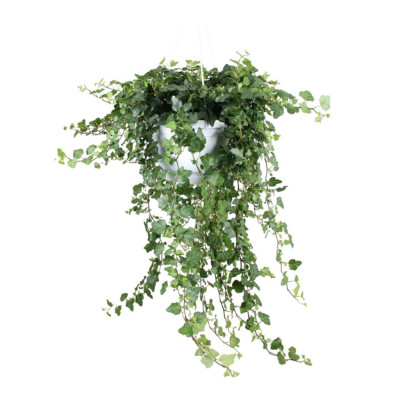
AED 50.00 + VAT
Hedera helix, the common ivy, English ivy, European ivy, or just ivy, is a species of flowering plant of the ivy genus in the family Araliaceae, native to most of Europe and western Asia. A rampant, clinging evergreen vine, it is a familiar sight in gardens, waste spaces, and wild areas, where it grows on walls, fences, tree trunks, etc. across its native and introduced habitats. As a result of its hardy nature, and its tendency to grow readily without human assistance, ivy attained popularity as an ornamental plant, but escaped plants have become naturalised outside its native range and grow unchecked in myriad wild and cultivated areas.
-
Sold out!
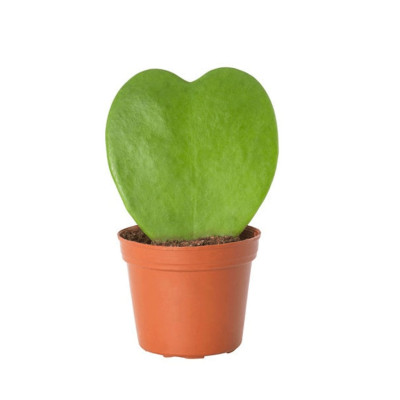
AED 30.00 + VAT
Hoya kerrii, also referred to colloquially as Hoya hearts, is a species of Hoya native to the south-east of Asia. Its eponymous collector is Arthur Francis George Kerr, Irish physician and botanist. As the thick leaves are heart-shaped, the plant is sometimes named “lucky-heart”. In Europe, it is sold for Saint Valentine’s Day. Its origin area is South China, Vietnam, Laos, Cambodia, Thailand and the Indonesian island of Java.
-
Sold out!

AED 40.00 + VAT
Maranta Leuconeura has many varieties, and one outstanding cultivar is Maranta Kerchoveana, famously known as Maranta Rabbit’s foot and Maranta Maranta Green Stripe. Plant owners love Maranta Kerchoveana because of its stunning foliage patterns, mint green color with dark green big spots that look like rabbit tracks across the midrib. Moreover, the contrasting silvery-blue color on the lower side of the leaf makes this plant more unique. Like other prayer-plants species, this also folds the leaves in the night for prayer.
-
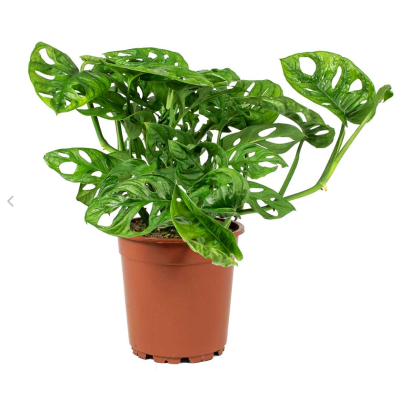
AED 25.00 + VAT
‘Monkey Mask’ is a climber, grown in temperate areas as a greenhouse, conservatory or house plant, and is up to 1m high, with elliptic to oblong-lanceolate, rich green leaves, up to about 20cm long, each with several perforations.
-
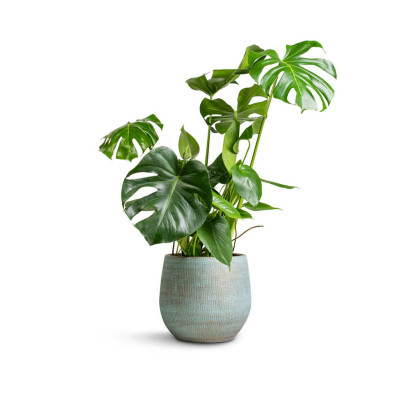
AED 90.00 + VAT
Monstera deliciosa, the Swiss cheese plant or split-leaf philodendron is a species of flowering plant native to tropical forests of southern Mexico, south to Panama. It has been introduced to many tropical areas, and has become a mildly invasive species in Hawaii, Seychelles, Ascension Island and the Society Islands. It is very widely grown in temperate zones as a houseplant.


































